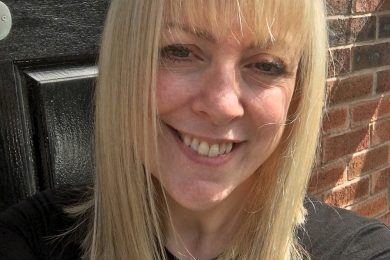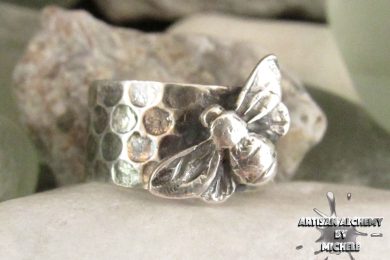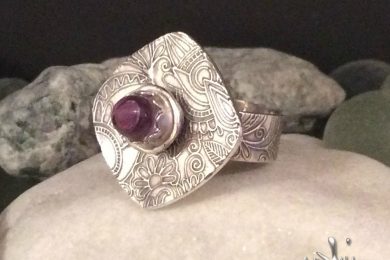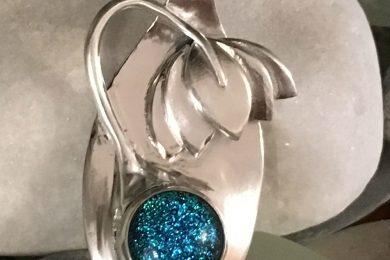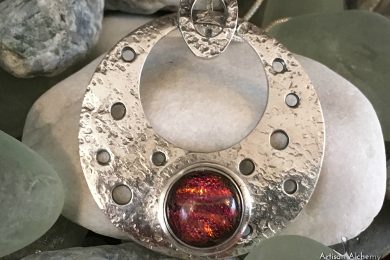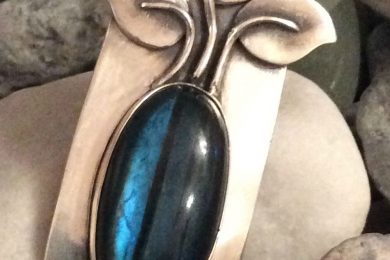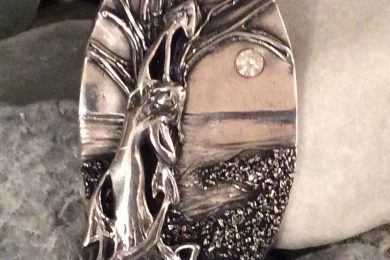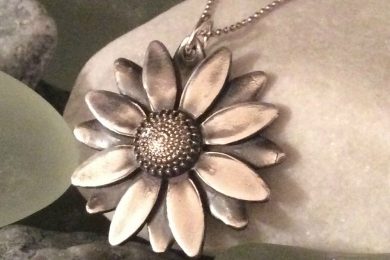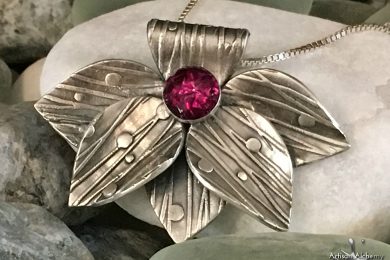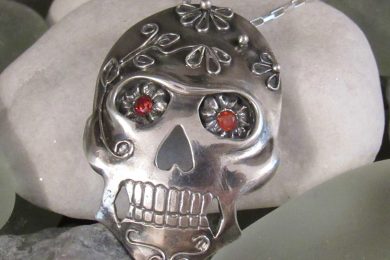Hello Michele, thank you for agreeing to do this interview with us today. You grew up in a very artistic environment that obviously inspired your own creative journey. Can you tell us a little bit more about that?
It’s my pleasure and thank you for asking me to do this. You’re right that I grew up in an artistic environment as my parents had very different (and unique) jobs. My mother was an opera singer and my father was a racing driver so my upbringing was definitely not the “norm”. We travelled the world - which was such a privilege – and it gave me an insight and appreciation of different cultures.
Although my mother’s job probably appears to be more artistic, my father had a very creative mind and would often redesign parts for his racing cars usually from lighter materials to help him go faster and he was certainly creative when he deflated the tires on my Mum’s car in order to meet her! My mother’s work was creative in a different (and more legal) way! She was definitely an artist and took great pride in creating characters using stage make-up, wigs and the most wonderful costumes. Sitting in her dressing room or being backstage was a dream, so magical and I loved to play with the jewelry and costumes.
I don’t think I recognized that I too might be creative but, looking back, it perhaps became evident when I started dancing and ballet became my first love. The costumes were fantastic and I remember being particularly fixated on a pair of pinking scissors and cutting the edge of my tutu to make it “different”! For me, my upbringing was normal but I was surrounded by artistic influences and it was probably obvious that some of that would rub off on me. Interestingly, as well as making jewelry, I still design costumes but this time it’s for my daughter who is also a dancer. I can’t sew (at all!) so have to get others to bring my ideas to life but give me some rhinestones and I can transform a costume!
You started off making jewelry at quite an early age using gold and platinum and with the aid of CAD design. What drove you to make the change to silver clay?
The change to working with silver clay really happened because I felt that handing over a design to a jeweler and letting them make the jewelry for me missed out a big chunk of the creative process. I wanted to be more hands on and actually shape the pieces, bringing them to life, so I tried various mediums such as wire and beading but nothing felt quite right. I missed the feeling of metal and it was quite by accident that I discovered metal clay.
I started by using Art Clay Copper so that I could practice with relatively inexpensive materials and after watching a few online tutorials, just jumped in. I learned so much using Art Clay Copper and it gave me a really good head-start (and much more confidence) before using Art Clay Silver.
What, for you, is the most exciting stage of creating a new piece?
I actually enjoy the whole process but definitely seeing a piece in its final greenware state before it goes in the kiln is such a thrill. When all the sanding and refining has been done I have a huge sense of achievement – especially if the piece has a particularly complex construction. Of course, there’s an incredible excitement when I open the kiln door after firing as well.
What inspires you?
This is a difficult question because I take inspiration from so many things. For example, I really love the Art Deco and Art Nouveau periods. Some of the paintings and jewelry from those time periods really appeal to me because of their fluid, feminine lines.
Lots of artists will say that nature inspires them and I would say that also. Without thinking, my designs often include flowers, twigs and leaves although interestingly my brain designs very symmetrically. In most of my designs I have to have symmetry but that doesn’t apply if I’m making a flower for example. Using a form that appears in nature is the only time that I can cope with asymmetry.
Recently I went to the British Museum in London and took many photos of Roman and Egyptian jewelry, some of which were incredible considering the basic tools that were used. As I walked around I was thinking how I would use metal clay to construct similar designs and I’m often inspired in that way.
Teaching is obviously a skill that you take great pleasure in sharing with others. Where does your passion for teaching come from?
I’m really not sure where my passion for teaching has come from. My early career was as a Trainer, delivering training packages to companies across a range of management skills. I’m actually quite shy until I get to know people but when I’m training (or delivering workshops as I do now), I come alive and because I know how to teach, I’m able to break everything down to manageable segments and encourage learners to achieve their best. I love it when I get somebody on a workshop who is nervous or convinced they won’t go home with an item of jewelry and at the end of the day they are thrilled and amazed at what they’ve made. That makes everything worthwhile and it’s why I teach. There’s nothing better than helping somebody to achieve what they thought was impossible.
Do you see any new emerging trends with metal clay? Which direction are you heading?
There are so many products being invented and it’s an exciting time to be involved with metal clay as there’s always something new to try. I love gadgets and tools and really enjoy trying out new products but the best thing about the metal clay community is that people are always happy to help and share ideas so it’s a continual learning process.
In terms of emerging trends, this isn’t really emerging (as it’s already emerged) but using the Silhouette machines with metal clay has given a completely different aspect to how we can work with clay. In some ways, it’s not dissimilar to using a CAD to design which is very exciting because, especially for those who can’t draw or sculpt, it’s a great way to achieve a very professional finish. I recently bought a Silhouette Cameo although I’ve yet to use it but I’m excited about the possibilities. I won’t ever give up the traditional tools though because at the moment there’s still no real substitute for them. As far as what direction I’m heading in – I just want to continue to learn, perfect new skills and be able to pass that learning onto others.
I believe you have been doing some testing with the new Art Clay 950. How has that been?
In a word? Wonderful! I’ve loved every minute of using it. Having a Sterling ready-made clay, rather than a powder, is fantastic. Where Art Clay 950 really comes into its own is with ring making or delicate pieces that need the additional strength that Sterling provides. I make quite a lot of rings and wear them daily and with Fine Silver, the rings can bend out of shape over time (easily rectified with a gentle hammering) but with the 950 clay it’s so strong and durable there will be little or no maintenance required.
Interestingly, I found 950 and 999 Fine Silver clay to be very similar in how they respond when being shaped but there are some subtle differences. 950 is highly responsive to textures, perhaps more so than 999 and it also remains very flexible when air dried which gives more possibilities. I love the fact that using the regular Art Clay Paste worked with the 950 and that 950 and 999 can be combined in the same piece which is a definite benefit. In the future, I’m hoping that we’ll see 950 syringe clay and perhaps even a fast fire Sterling clay. Although I’ll definitely still use the Fine Silver clay, with 950 I’ve found my new favorite clay!
Finally, what does the future have in store for you?
Things have happened so quickly in my metal clay journey that it’s almost impossible to second guess what will happen in the future! If it’s as exciting as the past couple of years, I’ll be very happy!
You can visit Michele's website at: http://www.artisan-alchemy.net/


